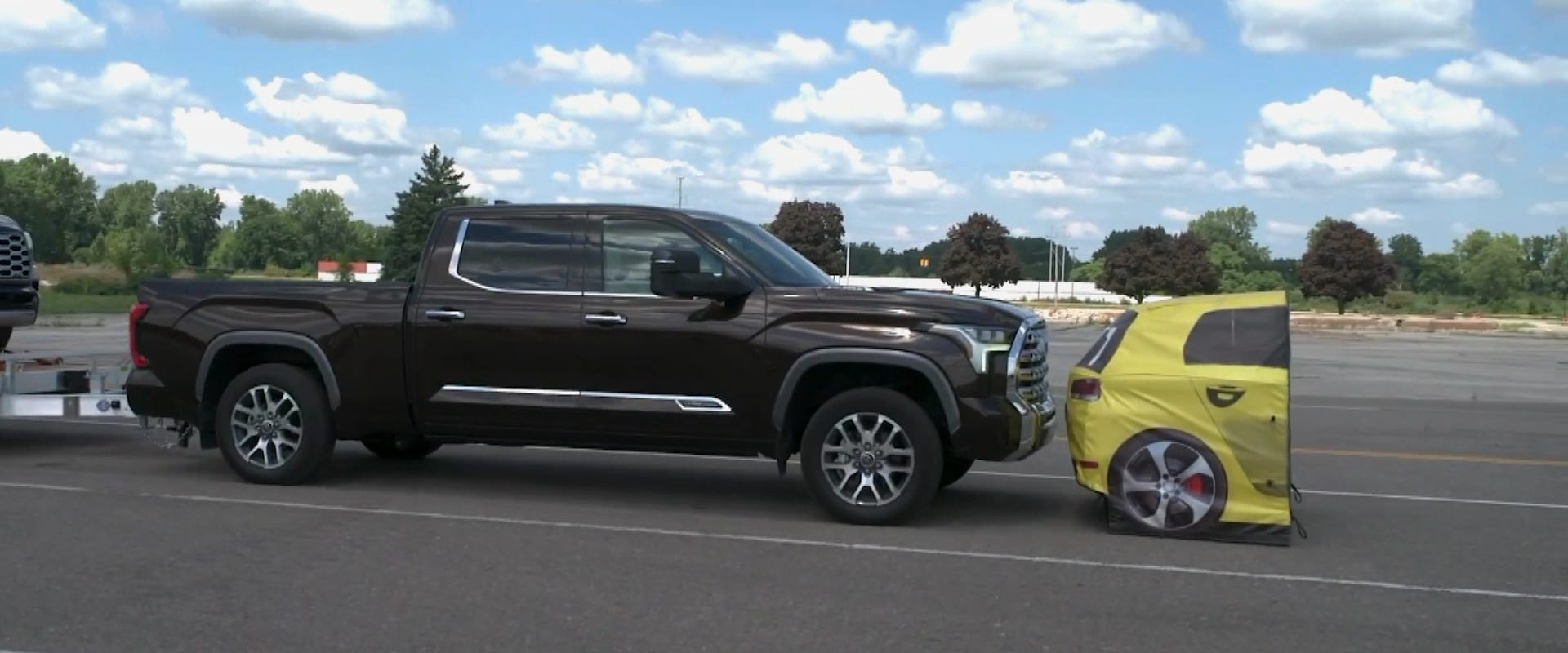American Center for Mobility
In the history of car development, proving grounds have played a crucial role in allowing carmakers to validate a car’s functionality, performance, and durability. But as we move into a new era of electrification, AI and self-driving cars, the role of the proving ground is evolving as well. Come along as we peek behind the privacy fence at one test track that’s building on its past, to keep pace with the future.
The American Center for Mobility is located adjacent to Ford’s historic B-24 bomber factory at Willow Run airport near Detroit, Michigan and on the former site of GM’s Ypsilanti transmission plant. The only remnants from that now are a few security posts and wide expanses of cracked pavement, but these reminders of bygone industry are exactly what’s helping today’s engineers perfect the cars and trucks of tomorrow.
Like a typical proving ground, the 500-acre facility includes a 2-mile highway loop with exit ramps and road signage, a 700-foot tunnel, simulated urban areas, and six-lane intersections. It’s not a pristine environment, with bumps, lumps and weeds everywhere, but that’s just how ACM’s clients want it.
REUBEN SARKAR: But you know, cracked pavement, potholes, faded lane lines. In some cases, you want to leave those as they are because that’s what people encounter in the real world.
JOHN DAVIS: And as we soon found out, the testing that takes place here is far from typical.
REUBEN SARKAR: A traditional proving ground is focused on testing the mechanical paces of a vehicle. So, you think about ride and handling, NVH, durability. Ours is designed to test the sensing and situational awareness of a vehicle. What can it see and sense, and how does it make decisions, right, in terms of a computer replacing a human driver, so it’s less tuned towards, you know, like a high-speed oval, nice perfectly paved track. It’s really meant to throw challenges at the vehicle sensor.
JOHN DAVIS: Another ACM specialty is found inside the EV base camp, a unique test facility for electric vehicle charging equipment, set up through a grant from the federal government’s joint office of energy and transportation. The goal here is to ensure that every EV charger works every time, with every kind of car.
REUBEN SARKAR: But it’s really a place that you can put a diversity of different DC fast chargers and then have a place where the autos and others can come and test against those different fast chargers. So, a place that you can check whether the car software talks to the charger software to make sure that they’re interoperable, so even though you may have a standard, how people code on the vehicle side, how people code on the charger side, and then all the variables that come into play in the real world, you know, when the charging happens, can cause interoperability issues.

JOHN DAVIS: Making this all possible is another leftover from the GM transmission plant – an on-site electric substation. And in the world of EV charger testing, power is the key to everything.
REUBEN SARKAR: Why the substation is important to us is, we own the power house that’s on the end of it, makes us the utility on property, There’s the ability to expand the capacity of that substation to 90 megawatts. And you’ll find that a lot of people just don’t have a lot of idle grid capacity that’s sitting around, right. Even at large automotive companies, we’ve had some of them tell us “hey, we’re maxed out on power.”
That power station will allow us to do extreme fast charging, to be able to host very large testing events, testing symposiums, where there are, you know, 30 cars being tested at once against 30 different chargers.
JOHN DAVIS: Every new automotive technology needs to be tested and perfected before hitting the road for real. The research and validation being done here and now at the American Center for Mobility is enabling a safe and efficient driving future for us all.








